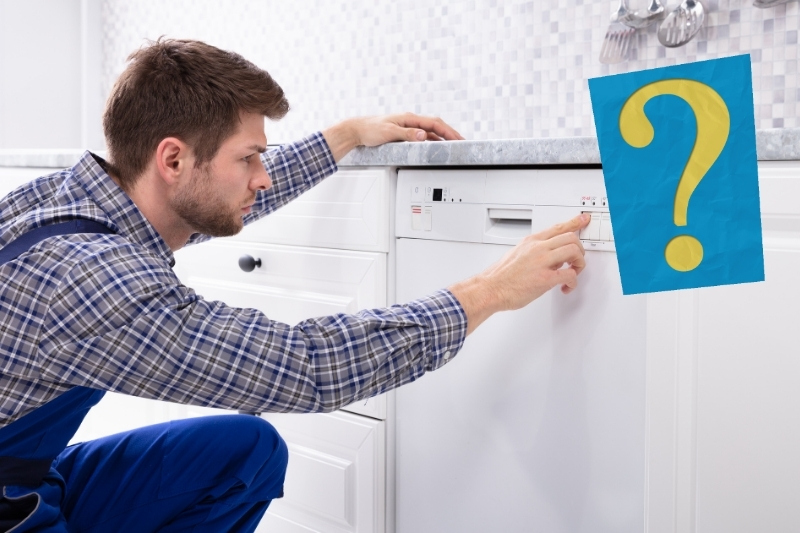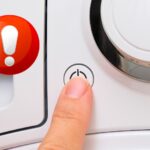When your dishwasher won’t turn on, there are several things that could be causing it. Thankfully, most of the causes of a dishwasher not turning on are fairly straightforward to identify and fix.
Below, we look at all the reasons a dishwasher may not turn on and what you can do to solve this issue.
1. Check the Power Supply
The power supply was very likely the first thing you checked, and we don’t mean to insult your intelligence here.
However, if your dishwasher isn’t turning on at all, there is likely an issue with the power supply.
Perhaps the plug has wiggled out of the socket, or whoever installed the dishwasher forgot to plug it in or turn the switch on. Or the circuit the dishwasher is on has tripped.
So, take a look at the power supply and the circuit first. This is the best way of narrowing down the problem to the machine itself.
2. Reset Your Dishwasher
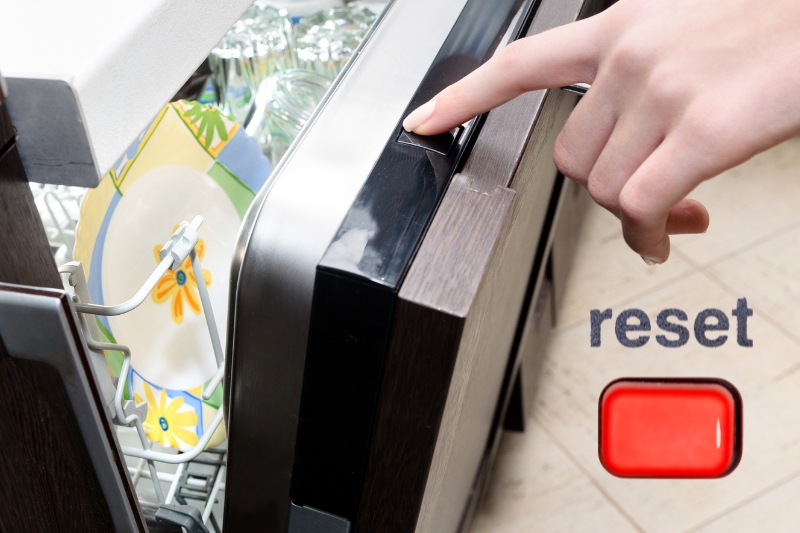
Most modern dishwashers can be reset. Sometimes when a safety mechanism has been tripped on the machine (like the thermostat overload, for example), the dishwasher will need to be reset before it will work again.
Sadly, there isn’t a universal way of resetting a dishwasher. Most manufacturers use different methods for this.
Some dishwashers require you to unplug them, while others have a rest button on the control panel.
Have a look in your owner’s manual for advice here. If you can’t find your dishwasher’s manual, you can find a digital copy on the manufacturer’s website in most cases.
3. Check the Door Latch
If the door latch on your dishwasher is engaged, this will prevent the dishwasher from turning on.
As you close the door of your dishwasher, listen for a clicking sound, this is the latch engaging. If you don’t hear that sound, have a look around the door and the front of the dishwasher for any obstructions. And at the latch itself, if it is broken, a replacement may be required.
4. Inspect the Child Safety Lock
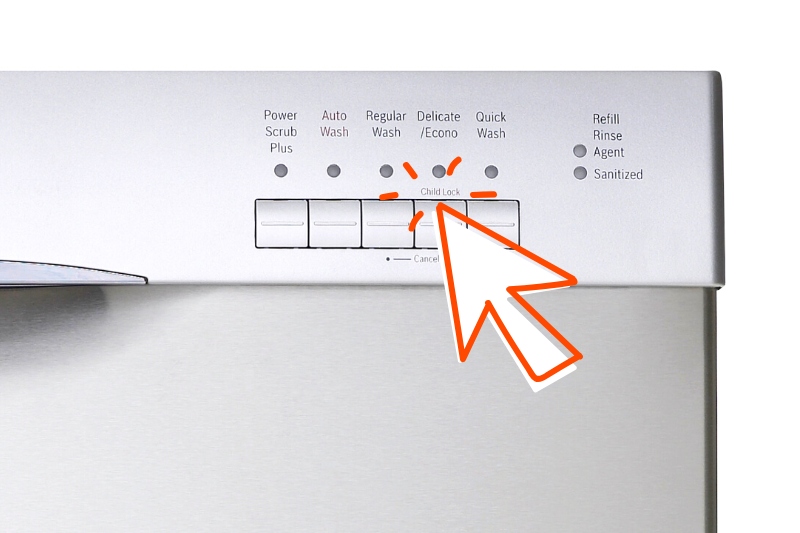
Most dishwashers have a child safety lock which basically stops them from opening the machine and changing any settings.
In a lot of cases, dishwashers will not run when the child safety lock is engaged, so you’ll need to deactivate this. Consulting the owner’s manual will help here too.
From here on out, please turn off the power to your dishwasher. You’ll need to remove panels to check certain components in all of the causes below, so for your safety, ensure no power is getting to your dishwasher.
5. Check the Door Latch Switch
If the latch on your dishwasher is broken, the switch may be too.
To check this, remove the inner door panel of your dishwasher. Here, you can locate the door latch assembly and check to see if the latch and the switch are engaging as they should.
If they are engaging as they should, use a multimeter set to Rx1 to test the switch terminals. The reading should be nearly zero. If your reading is different, replace the door latch switch.
6. Test the Timer
The timer on a dishwasher is really important. It doesn’t just count down the minutes of when the cycle will finish. It controls everything. When each different stage of the cycle will begin, how long the water heats up and a great deal more. If there is a fault with the timer, your dishwasher may not turn on.
To test the timer, first, you need to locate it. In most cases, the timer is on the control board, and you can gain access to this by removing the inner door panel. However, some timers are located behind the lower kick plate of the dishwasher.
Grab your multimeter and set it to Rx1000. The expected values should be between 2,000 and 3,500 ohms. If your reading is different, the timer will need to be replaced.
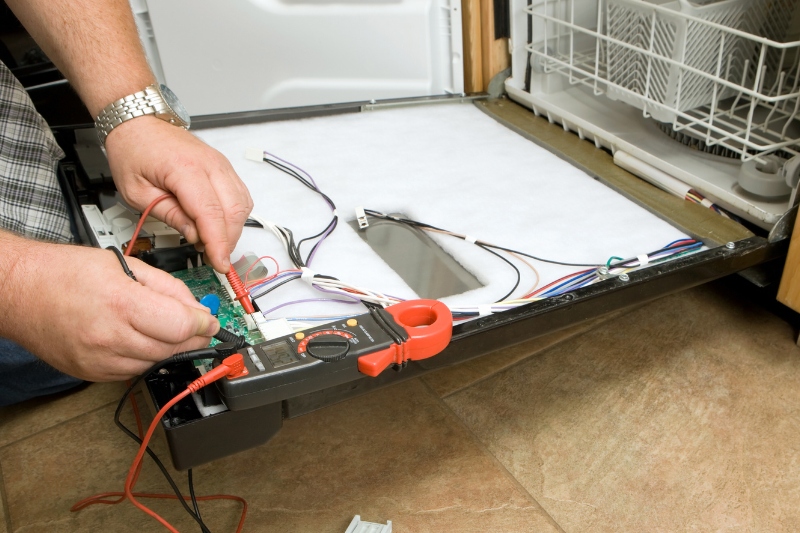
7. Check the Selector Switch
Selector switches on a dishwasher determine the wash cycle for each load. These are what you press when you change any cycle settings. You’ll need to test each selector switch individually.
To do this, remove the switch from the control panel, and with your multimeter set to Rx1, test the terminals as you press the button. If this produces a reading of zero, the switch is fine. If it doesn’t, you’ll need to replace that switch.
8. Test the Motor Start Relay
This relay tells the dishwasher’s motor when to kick in, so if it is faulty, the motor may not know when to kick in. This is located behind the lower access panel near the pump.
Remove the relay and refer to the wiring diagram if you have it (check the manufacturer’s website for this).
With your multimeter set to Rx1 again, test the coil for continuity. If it reads zero, the relay is fine. If it doesn’t, you’ll need to replace it.
9. Check the Thermal Fuse
The thermal fuse works much the same as the fuse in a plug, only it is activated by heat. If your dishwasher got too hot during a cycle, it might have tripped this fuse, and this prevents your dishwasher from turning on again.
The thermal fuse is located behind the inner door on the control panel. Disconnect it from the panel and test it using your multimeter set to Rx1. If the reading is zero, the thermal fuse is okay. If not, it will need to be replaced.
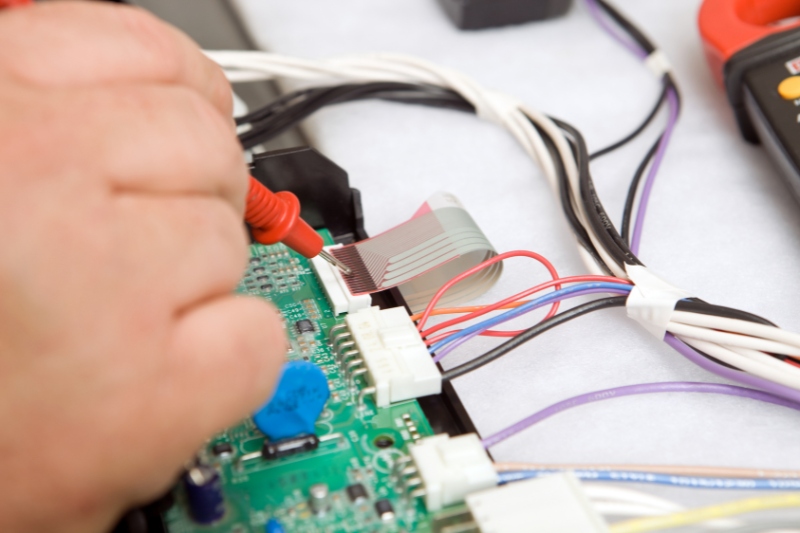
10. Test the Drive Motor
The drive motor is what forces water through your dishwasher. If this is faulty, not only will your dishwasher may not be getting water, but there is a chance that the control panel will be preventing the machine from running.
You can access the drive motor from the lower access panel. Once you’ve disconnected it, use your multimeter, set to Rx1, to test the terminals. This should produce a reading of zero.
Then move one of the probes to the metal housing of the motor. This shouldn’t produce a reading at all. If your readings differ, the drive motor will need to be replaced.
Finding the Right Replacement Parts
To find the correct replacement parts for your dishwasher, take note of the model number and use this in your searches online for the parts.
While quite a few dishwasher manufacturers use universal parts, some do differ, and your dishwasher won’t run correctly unless it has the correct parts. Again, the owner’s manual for your machine may help here.
We hope this look at dishwashers and the causes of them not turning on has been helpful. If you didn’t find the cause of your issue here, we do have other articles about faults with dishwashers that may help.
We also have lots of lists of the best dishwashers available in the UK for all budgets if your dishwasher cannot be repaired.

In The Wash is your guide to the best laundry and cleaning products, tips and tricks. Our mission is to solve the UK’s cleaning and laundry dilemmas!
